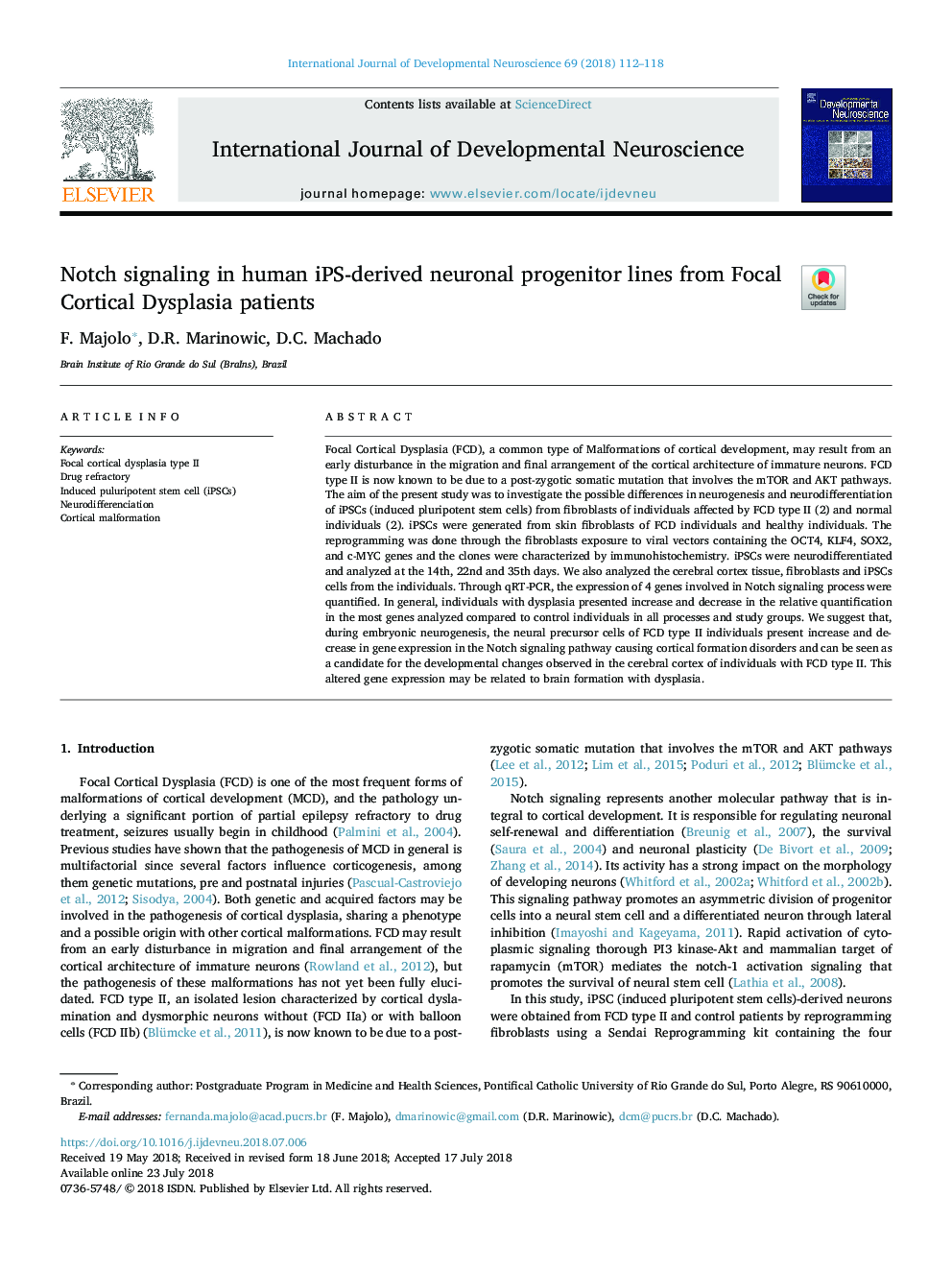| Article ID | Journal | Published Year | Pages | File Type |
|---|---|---|---|---|
| 8626032 | International Journal of Developmental Neuroscience | 2018 | 7 Pages |
Abstract
Focal Cortical Dysplasia (FCD), a common type of Malformations of cortical development, may result from an early disturbance in the migration and final arrangement of the cortical architecture of immature neurons. FCD type II is now known to be due to a post-zygotic somatic mutation that involves the mTOR and AKT pathways. The aim of the present study was to investigate the possible differences in neurogenesis and neurodifferentiation of iPSCs (induced pluripotent stem cells) from fibroblasts of individuals affected by FCD type II (2) and normal individuals (2). iPSCs were generated from skin fibroblasts of FCD individuals and healthy individuals. The reprogramming was done through the fibroblasts exposure to viral vectors containing the OCT4, KLF4, SOX2, and c-MYC genes and the clones were characterized by immunohistochemistry. iPSCs were neurodifferentiated and analyzed at the 14th, 22nd and 35th days. We also analyzed the cerebral cortex tissue, fibroblasts and iPSCs cells from the individuals. Through qRT-PCR, the expression of 4 genes involved in Notch signaling process were quantified. In general, individuals with dysplasia presented increase and decrease in the relative quantification in the most genes analyzed compared to control individuals in all processes and study groups. We suggest that, during embryonic neurogenesis, the neural precursor cells of FCD type II individuals present increase and decrease in gene expression in the Notch signaling pathway causing cortical formation disorders and can be seen as a candidate for the developmental changes observed in the cerebral cortex of individuals with FCD type II. This altered gene expression may be related to brain formation with dysplasia.
Keywords
Related Topics
Life Sciences
Biochemistry, Genetics and Molecular Biology
Developmental Biology
Authors
F. Majolo, D.R. Marinowic, D.C. Machado, J.C. Da Costa,
